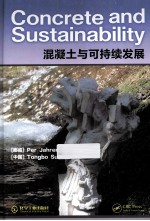图书介绍
混凝土与可持续发展 英文2025|PDF|Epub|mobi|kindle电子书版本百度云盘下载

- 杰森隋同波 著
- 出版社: 北京:化学工业
- ISBN:9787122179357
- 出版时间:2013
- 标注页数:440页
- 文件大小:103MB
- 文件页数:460页
- 主题词:混凝土-可持续性发展-英文
PDF下载
下载说明
混凝土与可持续发展 英文PDF格式电子书版下载
下载的文件为RAR压缩包。需要使用解压软件进行解压得到PDF格式图书。建议使用BT下载工具Free Download Manager进行下载,简称FDM(免费,没有广告,支持多平台)。本站资源全部打包为BT种子。所以需要使用专业的BT下载软件进行下载。如BitComet qBittorrent uTorrent等BT下载工具。迅雷目前由于本站不是热门资源。不推荐使用!后期资源热门了。安装了迅雷也可以迅雷进行下载!
(文件页数 要大于 标注页数,上中下等多册电子书除外)
注意:本站所有压缩包均有解压码: 点击下载压缩包解压工具
图书目录
1 Introduction1
1.1 The economical impact of concrete2
1.2 Concrete and social progress7
2 Environmental issues53
2.1 Global/regional/local aspects53
2.2 Rating systems53
2.3 Evaluation systemstools58
2.4 ISO methodology/standards67
2.5 Variation in focus73
2.5.1 Different sectors of the concrete industry tend to focus on different aspects74
2.5.2 Focus:Lifetime expectancy perspectives75
2.5.3 Focus:202075
2.5.4 Focus:205075
2.6 Traditions/testing76
2.6.1 Example 177
2.6.2 Example 278
2.6.3 Example 379
3 Emissions and absorptions81
3.1 General81
3.2 CO2 emission from cement and concrete production85
3.3 Emission of other greenhouse gases89
3.4 Absorption/carbonation92
3.5 The tools and possible actions103
3.5.1 Increased utilisation of supplementary cementing materials103
3.5.2 Fly ash107
3.5.3 Blast furnace slag115
3.5.4 Silica fume118
3.5.5 Metakaolin120
3.5.6 Rice husk ash(RHA)121
3.5.7 Natural pozzolans124
3.5.8 Other ashes and slags130
3.5.8.1 Sewage sludge incineration ash(SSIA)131
3.5.8.2 Ferroalloy slag131
3.5.8.3 Barium and strontium slag132
3.5.8.4 Other types of slag132
3.5.8.5 Ashes from co-combustion133
3.5.8.6 Wood ash134
3.5.8.7 Fluidised bed ash134
3.5.9 Limestone powder135
3.5.10 Other supplementary cementitious materials138
3.5.11 Improvements and more efficient cement production141
3.5.12 New/other types of cement/binders152
3.5.12.1 High-belite cement(HBC)163
3.5.12.2 Sulphur concrete164
3.5.13 Increased carbonation165
3.5.14 Better energy efficiency in buildings165
3.5.15 Improved mixture design/packing technology/water reduction166
3.5.16 Increased building flexibility,and more sustainable design and recycling practice169
3.5.17 Miscellaneous172
3.5.17.1 Production restrictions172
3.5.17.2 The testing regime172
3.5.18 Carbon capture and storage(CCS)172
3.5.18.1 Capture173
3.5.18.2 Storage174
3.6 Variation in focus176
3.6.1 Focus 1:Lifetime expectancy perspective176
3.6.2 Focus 2:2020177
3.6.3 Focus 3:2050178
3.7 Some conclusions180
4 Recycling181
4.1 Recycling of concrete181
4.1.1 Norway186
4.1.2 Japan187
4.1.3 The Netherlands188
4.1.4 Hong Kong,China189
4.1.5 General189
4.1.5.1 Processing technology192
4.1.5.2 Fines194
4.2 Recycling of other materials as aggregate in concrete200
4.2.1 Used rubber tires in concrete200
4.2.2 Aggregate manufactured from fines204
4.2.3 Processed sugar cane ash204
4.2.4 Recycled plastic,e.g.,bottles204
4.2.5 Hempcrete and other"straw concretes"206
4.2.6 Papercrete207
4.2.7 Oil palm shell lightweight concrete208
4.2.8 Glass concrete208
4.2.9 Paper mill ash for self-compacting concrete(SCC)211
4.2.10 Slag211
4.2.11 Recycling of"doubtful"waste as aggregate211
4.2.12 Iron mine mill waste(mill tailings)213
4.2.13 Bauxite residuered sand213
4.2.14 Copper slag214
4.2.15 Other materials214
4.2.16 Waste latex paint215
4.2.17 Fillers for self-compacting concrete216
4.3 Recycling of other materials as reinforcement in concrete219
4.4 Recycling of other materials as binders in concrete220
4.4.1 Waste glass220
4.4.2 Recycling of fluid catalytic cracking catalysts220
4.5 Recycling of cement kiln dust(CKD)221
5 The environmental challenges—other items225
5.1 Aggregate shortage225
5.2 Durabilitylongevity231
5.3 Energy savings241
5.4 Health248
5.4.1 Skin burn250
5.4.2 The chromium challenge250
5.4.3 Compaction by vibration252
5.4.4 Dust252
5.4.5 Emission and moisture in concrete253
5.4.6 Form oil255
5.4.7 NOx-absorbing concrete255
5.4.7.1 General255
5.4.7.2 Principle of reaction255
5.4.7.3 The catalyst255
5.4.7.4 The effects256
5.4.7.5 Concrete—product areas257
5.4.7.6 Other experiences258
5.4.7.7 Climate change and health259
5.5 Leakage260
5.5.1 General260
5.5.2 Leakage of pollutants from cement and concrete261
5.5.2.1 Leakage from the cement manufacture process262
5.5.2.2 Leakage from concrete263
5.5.3 Concrete to prevent leakage269
5.6 Noise pollution271
5.6.1 Noise reduction in concrete production273
5.6.2 Noise reduction from traffic273
5.6.3 Reduction of noise pollution in buildings274
5.6.4 Step sound reduction in stairways275
5.7 Radiation280
5.7.1 Effects of radioactive radiation on the human body281
5.7.1.1 Alpha particles(or alpha radiation)281
5.7.1.2 Beta particles282
5.7.1.3 X-rays and gamma rays282
5.7.2 Natural radioactivity in building materials285
5.7.3 Radiation from cement and concrete289
5.7.4 Radioactivity risk reduction with cement and concrete292
5.7.4.1 Concrete as a shield of radiation292
5.7.4.2 Encapsulation of radioactive materials with cement and concrete296
5.7.5 Clearance of radioactive concrete299
5.8 Safety300
5.8.1 Concrete as a safety tool303
5.8.2 Concrete safety levels in a climate change perspective305
5.9 Water307
5.9.1 Water shortage310
5.9.2 Managing the increased precipitation314
5.9.2.1 Pervious concrete316
5.9.2.2 Pervious ground with concrete paver systems319
5.9.2.3 Delaying systems319
5.9.3 Reuse of wash water from concrete production320
5.9.4 Escape of wash water from concrete production to freshwater and the sea328
5.9.5 Food supply—artificial fish reefs (AFRs)331
5.9.5.1 History332
5.9.5.2 Where have AFRs been used?332
5.9.5.3 Motivations for establishing AFRs333
5.9.5.4 Design factors334
5.9.5.5 Some examples337
5.9.5.6 Restoration of coral reefs337
5.9.5.7 The Tjuvholmen project338
5.9.6 Erosion protection342
5.10 Wastes342
6 New possibilities and challenges357
6.1 Small hydroelectric power stations358
6.2 Windmills359
6.3 New raw materials/low energy and low CO2 cements365
6.3.1 Principle for clinker composition design366
6.3.2 Lower energy and low-emission clinker preparation368
6.3.3 Performance evaluation of HBC368
6.3.3.1 Strength369
6.3.3.2 Heat evolution characteristics370
6.3.3.3 Chemical corrosion resistance371
6.3.3.4 Drying shrinkage371
6.3.3.5 Existing standards for HBC372
6.3.3.6 Simplified explanation for the excellent performance of HBC372
6.3.4 Latest results on belite-calcium Sulfoaluminate(BCSA)cement372
6.4 New concrete products and components373
7 The future375
References379
Index413
热门推荐
- 1366976.html
- 2864794.html
- 3016896.html
- 1064359.html
- 1458439.html
- 2006173.html
- 72247.html
- 1626405.html
- 1274227.html
- 1079814.html
- http://www.ickdjs.cc/book_2060781.html
- http://www.ickdjs.cc/book_2589149.html
- http://www.ickdjs.cc/book_2353925.html
- http://www.ickdjs.cc/book_2159609.html
- http://www.ickdjs.cc/book_3600397.html
- http://www.ickdjs.cc/book_137537.html
- http://www.ickdjs.cc/book_2832834.html
- http://www.ickdjs.cc/book_3163214.html
- http://www.ickdjs.cc/book_3834466.html
- http://www.ickdjs.cc/book_1270011.html